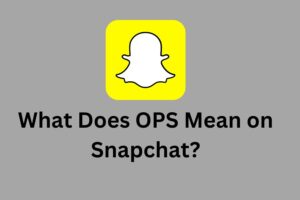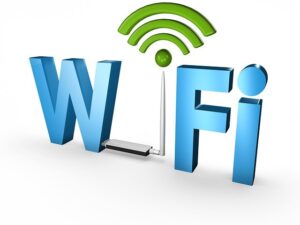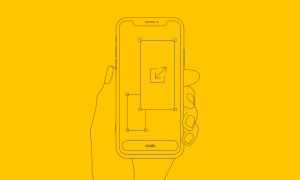How Mobile Technology Drives Population Health Management

Soon it will be ten years since Apple successfully trademarked one of the catchiest slogans of all time: “there’s an app for that”. No doubt, the company has remained committed to this philosophy, with over 2 million apps available to Apple App Store users today. A sizable chunk of these — some 318, 000 entries — belong to the Health category. This is what the top 10 of highest grossing Health & Fitness apps looked like in January, according to Sensor Tower:
It’s no wonder that personal wellness apps get so much attention in iOS development. Apple users download apps to help them keep to a healthy diet, get exercise advice, monitor their weight, control medication intake, receive mental health support, and for many other reasons. We are accustomed to using our phones to reach our personal goals.
But the situation has changed dramatically since the start of 2020, with a global public health emergency coming to the forefront. This is a good time to remember that mHealth is not concerned solely with tackling individual concerns, but can also be incredibly useful during a coordinated PHM effort.
What are PHM and mHealth and how are they related?
PHM, or population health management, is a discipline within healthcare services with a primary focus on ensuring quality care and improving outcomes across groups of patients (such as patients of a certain hospital), patient communities (defined by a specific disease or health risk factor), or entire populations (defined by geography). According to Philips, “delivering on the vision of PHM requires a robust care management and risk stratification infrastructure, a cohesive delivery system, and a well-managed partnership network.”
mHealth, on the other hand, is defined by WHO’s Global Observatory for eHealth as “medical and public health practice supported by mobile devices, such as mobile phones, patient
monitoring devices, personal digital assistants (PDAs), and other wireless devices.” mHealth allows leveraging a mobile phone’s features, from the most basic to the most advanced, to deliver health-related information or collect relevant feedback.
For the purposes of PHM, mHealth apps provide a non-disruptive channel of communication with people en masse and a source of accurate, representative health data to guide crucial decisions on healthcare policies.
How mobile tech benefits our health
At the dawn of mobile technology, the best thing a mobile phone could do was let you call your healthcare provider or receive a standard text message from your hospital so you don’t miss a scheduled check-up.
In 2020, you’d be hard pressed to find a person who doesn’t own at least one mobile phone — and more often than not, it’s some kind of smartphone with significant computing power. Powerful technology is becoming cheaper and more ubiquitous, giving the general public instant access to high-speed mobile networks, sophisticated software, and virtually limitless cloud storage.
There are plenty of options in the market for consumers who want to go beyond smartphone capabilities or need special treatment, from wearable fitness trackers to sleep monitors and connected blood glucose kits.
Mobile tech in population health programs
How big a difference can mobile tech make where PHM is concerned?
According to a WHO report on digital health technology, “digital health and specifically mHealth have been shown to improve the quality and coverage of care, increase access to health information, services and skills, as well as promote positive changes in health behaviours to prevent the onset of acute and chronic diseases.”
The Be He@lthy, Be Mobile initiative was created by the joint efforts of the World Health Organization (WHO) and the International Telecommunication union (ITU). It works with governments and organizations across the world to help them effectively set up digital infrastructure and scale up mHealth services. The result of the initiative is a range of programs addressing such public health issues as hypertension, tobacco use, asthma, cervical cancer, diabetes, and more.
First announced in 2018, Apple’s Health Records API streamlines iOS development by leveraging EHR data. Users can add their personal health records from more than 500 participating hospitals and clinics to the Health app on their iPhones with a few taps. These records serve as the basis for multiple innovative mHealth solutions for chronic disease management, medication adherence, post-op rehabilitation, and other issues. Health data contributed by individuals drives the development of publicly available mHealth tools, as well as allows consumers to make their own mHealth experiences more personalized.
The use of mobile technology in healthcare has also received a big boost due to the pandemic. While a large swath of the world’s population lives under stay-at-home orders, traditional healthcare services are severely strained and often forced to turn away non-critical patients. In this situation, many find it safer and more convenient to seek medical help and advice through mobile.
A new battlefield: mobile PHM against COVID-19
In addition to the cases descripted above, mHealth is now gearing up for another ambitious initiative — pandemic control and prevention. Last month, Android and iOS development experts have joined forces to launch a comprehensive mobile solution for tackling the spread of COVID-19.
First will come the API that authorities will be able to integrate with public health apps used on Android and iOS devices. In the second phase, a more robust, Bluetooth-based platform is set to be released. The solution will allow individuals to opt in for contact tracing and get notified when they’ve been in contact with someone who received a positive coronavirus test result soon after.
As we can see, mHealth is extremely well positioned to deliver unique benefits to the healthcare industry at scale. It’s up to healthcare providers and public authorities to examine and leverage the capabilities mobile technology offers to achieve better outcomes for entire populations.
Author Bio: Irina Demianchuk is a Technology Copywriter at Oxagile, a full-cycle software development company. Oxagile combines deep healthIT expertise with solid mobile app development competence to deliver mobile solutions that drive better health outcomes.

![Recover You Lost iPhone Data [Step-by-Step Guide] Recover You Lost iPhone Data](https://www.meetrv.com/wp-content/uploads/2025/06/Recover-You-Lost-iPhone-Data-300x200.png)




